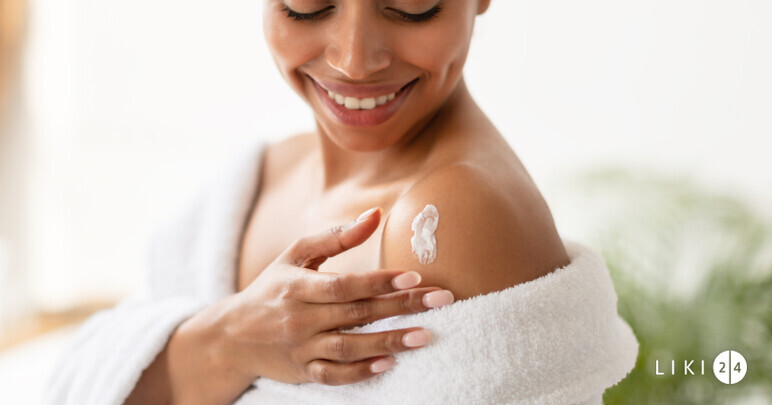The disease was first described in the fourteenth century by the French surgeon Guy de Chauliac described. In our regions, there is still confusion about the terminology: Couperose is often just called the formation of vascular networks on the face, while rosacea designates other manifestations (papules, pustules). However, in foreign medical literature, couperose and rosacea are synonymous.
In the 19th century, the proper name rosacea (acne rosacea - "pink acne") appeared. Later, it turned out that such inflammations have little in common with acne, but the name stuck.
Symptoms and causes of rosacea
Dermatologists divide the symptomatic disease into four subtypes. Often these are exactly subtypes and not stages of disease development, but sometimes they can alternate with increasing symptoms.
- Subtype 1, erythemato-telangiectatic rosacea - The erythema (redness) and telangiectasias (visible vessels) are localized mainly in the center of the face. Without timely treatment, these symptoms may persist permanently;
- Subtype 2, papulopustular rosacea (acne) - may be combined with the first subtype or occur alone. In this case, the redness is more intense and is completed by pimples - papules (without pus) and pustules (with pus);
- In rosacea subtype 3 - rosacea phimosis - the same redness, pustules and papules may appear, but in addition, the facial skin becomes uneven due to thickening of the epidermis and the appearance of pimples (typical swellings). Pimples are the result of enlarged sebaceous glands and thickened connective tissue in the skin. They can occur in any part of the face: for example, rhinophyma is a phymatous change in the shape of the nose;
- Subtype 4 (ocular rosacea ) - the most severe form of rosacea, affecting the eyes. Symptoms are similar to a stye ("barley") - both visually and in sensation: tearing, foreign body sensation in the eye, itching, burning.
Important! A worsening of rosacea symptoms can be associated with certain foods, alcohol, cold/overheating (hot baths, saunas), intense physical exertion, sun rays, various cosmetics, as well as medications (especially vasodilator preparations).
Risk groups
There are no clear limits, rosacea can occur in anyone at any age, especially if there is moderate or severe acne in the medical history. But it is most commonly diagnosed in women over 30 who have blue eyes, blond hair and fair skin. In this case, rosacea usually manifests in a mild form (subtypes 1 and 2).
Men are affected less often, but the disease is more severe - often after the third subtype (phimosis).
Causes of rosacea...
... unfortunately are not yet exactly known. However, scientists have guesses about the link of rosacea with:
- Hereditary factor - if close relatives have rosacea, the risk of developing it increases;
- Immune response. In rosacea subtype 2 (acne), the follicular mite Demodex folliculorum ("long" as opposed to the "short" Demodex brevis mite) is often found on the skin of patients. The digestive tract of this parasitic arthropod is home to the bacterium Bacillus oleronius. When it gets on the skin, it activates the immune response, which, according to scientists, leads to "acne rosea" - pustules and papules;
- The presence of Helicobacter pylori - the bacteria that causes gastric and duodenal ulcers. Helicobacter produces the enzyme urease, which activates gastrin hormone secretion through feedback mechanisms. This leads to excessive secretion of hydrochloric acid and chronic inflammation of the upper digestive tract. However, this bacteria is so far only on the list of potential rosacea triggers - a direct link has not yet been proven;
- The skin protein cathelicidin, which is normally involved in the skin's defense against infection, but at increased levels can lead to redness and swelling of the skin.
Treatment of rosacea
Whatever the suspected or actual causes of the condition - only a dermatologist can treat it completely. Drug treatment of rosacea depending on the subtype may include the use of brimonidine, oxymetazoline, ivermectin, metronidazole, tetracycline antibiotics, systemic retinoids, corticosteroids and other "serious" preparations, self-administration of which is strictly prohibited. Laser therapy may also be used.
In addition, it is strongly recommended for any form and severity of rosacea:
- Dietary supplements with antioxidants - or at least increasing the amount of antioxidant foods in the diet. Lists of these foods are easy to find on the internet, the main thing - that the food in question is not on the list of potential rosacea triggers, which we describe below in this article;
- a thorough examination of the gastrointestinal tract (GIT) and treatment of all diagnosed diseases.
However, in addition to drug treatment (and sometimes instead of it in mild forms of rosacea) certain additional rules regarding diet and lifestyle in general must be followed.
Diet for rosacea
The diet for rosacea is not particularly strict, but certain foods can act as triggers - 'triggers' - for worsening the disease. This is not to say that they should not be eaten at all, but you should pay attention to your skin's reaction to them.
The list of foods that can aggravate rosacea starts with foods high in histamine. Histamine is a neurotransmitter (transmitter of signals from the body to the central nervous system) and a mediator of immediate-type allergic reactions. That is, when histamine 'thinks' that the body is exposed to a certain threat, an immediate immune response occurs in the form of dilation of blood vessels. This is how the mechanism of the allergic reaction works.
In some cases, histamine in food can even lead to food poisoning, which is often mistaken for a food allergy. The biggest danger is fish (tuna, mackerel) that has been stored for a long time. By the way, the strong odor of tainted fish has "histamine-like notes" - in this case, the content of this substance in the products increases strongly. Sometimes "contaminated" Swiss cheese becomes the cause of histamine poisoning.
This substance is also present in ordinary, unadulterated foods, such as:
- grilled pork (there is less histamine in boiled pork);
- fermented foods - pickled cabbage, kimchi, etc..;
- foods containing lactic acid bacteria (and therefore also fermented) - cream, yogurt. For example, ripened fresh cheese contains more histamine than fresh - the same principle applies to 'ripening' meat and fish;
- raspberries, grapes;
- eggplant, tomatoes, spinach;
- almost all processed foods - canned, cured meats etc..;
- soy sauce;
- yeast of certain types;
- cocoa;
- wine, etc.
In some people, these foods can worsen the progression of rosacea.
Important! The real "culprit" of food allergies - endogenous histamine - is actively released from the body's mast cells when eating citrus fruits, egg whites, strawberries, pineapple, peanuts, licorice
Other triggers may include: liver (from all animals/birds), bananas, raisins, figs, beans (pods and broad beans), peas, avocado, chocolate, vanilla, vinegar.
In addition, hot and spicy foods can act as triggers. Pay attention to your diet to identify your personal 'triggers' for rosacea.
Keep a food diary and write down everything you eat and drink during the day. We do not always remember all the details of our menu throughout the day. Keeping a special diary helps to get a clear picture of the causes and effects, so that you can safely cut out the 'dangerous' foods, as well as the trigger drinks, which include, in addition to cocoa and wine mentioned above:
- beer, bourbon, gin, vodka, champagne;
- all hot drinks, including hot tea/coffee, hot cider, hot chocolate. Not to mention boiled wine - hot wine can cause a particularly 'shiny' skin reaction.
Important! It's not just hot coffee that can trigger a flare-up, it's caffeine withdrawal too. So if you suffer from rosacea and have decided to give up coffee, be prepared for a possible aggravation.
Other factors
Of course, a trigger for rosacea may not just be what we consume - food, drink, medication - but also external influences. These include excessive overheating/cooling, sun activity, excessive physical exertion, cosmetic products (especially those containing alcohol, camphor, glycolic acid, acetone, witch hazel, perfumes), frequent bathing or showering.
Organic "internal" factors also play an important role - nervousness, changes in the body during menopause, chronic cough.
As we can see, this disease requires not only drug treatment by a dermatologist, but also special attention to many factors that are not related to taking medication. Therefore, the best approach to rosacea is a complex approach.
How to "hide" rosacea with cosmetics
We clarify immediately - "camouflaging" with decorative cosmetics is not necessary for everyone. It has no therapeutic effect, so the need for it is determined solely by the rosacea sufferer themselves, depending on their aesthetic and psychological needs.
However, if there is a desire to visually "hide" the redness and vascular networks, green-tinted concealers and/or primers should be used. Green tint is used to hide red areas of the skin, while yellow for purple, lavender/purple for yellow/brown and pink for blue.
The whole 'camouflage' process consists of the following steps:
- Washing with a hypoallergenic product.
- Toning and moisturizing the face with a toner, serum, cream (preferably dermatologically specialized for rosacea skin).
- Apply green concealer/primer to red areas of the skin.
- Normal concealer with thicker coverage or foundation / CC cream.
- Powder, blush, highlighter etc - as desired.
However, we hope that the recommendations in our article today will help our readers with rosacea to resolve this problem as quickly and completely as possible therapeutically rather than by "camouflaging".
Pay attention to your diet and other possible triggers of aggravations, keep a food diary and - most importantly - don't postpone your visit to the dermatologist. Self-treatment for rosacea can significantly worsen its course.
The Liki24 team wishes you good health! :)



 Wellness
Wellness  Fitness
Fitness  Nutrition
Nutrition  Beauty
Beauty  Beauty
Beauty  659 Views
659 Views 

 Previous Article
Previous Article 







